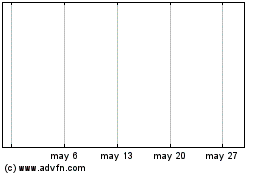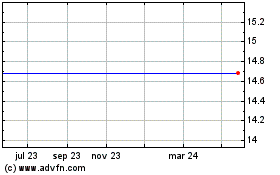World Stroke Organization and Philips call for action to expand
access to life-saving stroke care
September 10, 2024
- Joint policy paper provides recommendations for effective
policymaking and investments in stroke centers with
specialized treatments to improve health outcomes and reduce
costs
- Timely access to mechanical thrombectomy – a proven
minimally invasive therapy to remove the blood clot that caused the
stroke – has the potential to revolutionize treatment for major
ischemic strokes, but the procedure remains the exception rather
than the norm
Amsterdam, the Netherlands – Royal Philips (NYSE: PHG,
AEX: PHIA), a global leader in health technology, and the World
Stroke Organization (WSO), the world’s only global non-governmental
organization focused on stroke, today published a policy paper
calling for a revolution in stroke care to make a real difference
to the lives of millions and bring significant economic benefits
worldwide.
A stroke is typically an acute event, mostly caused by a
blockage in a blood vessel in the brain that prevents adequate
blood supply to brain tissue and leads to permanent loss of brain
cells. It is a leading cause of disability and death worldwide,
affecting an estimated 12 million people globally every year,
including an increasing number of young people. The direct and
indirect costs are conservatively estimated to be around USD 900
billion annually and are expected to almost double over the next 25
years.
Thanks to new technologies, procedures and clinical insights,
stroke may be prevented, treated and even reversed if treatment is
initiated rapidly. However, despite a strong evidence base, there
is insufficient focus on healthcare expenditure and research
funding to advance stroke care. As a result, access to timely
treatment remains limited and huge disparities in stroke care
persist.
The joint WSO-Philips policy paper, which is accompanied by an
editorial in The Lancet Neurology and aligned with recent World
Health Organization (WHO) guidance, proposes six policy
interventions to improve outcomes, and reduce direct costs with
substantial potential savings, releasing essential resources for
other priorities across struggling healthcare systems:
1. Set targets and quality
indicators, assess current gaps and prioritize stroke care in
global, national, and regional health plans.
2. Expand and invest in
infrastructures for essential stroke services, including
stroke units and intravenous thrombolysis.*
3. Expand and invest in (capital)
infrastructures for advanced stroke services: mechanical
thrombectomy.**
4. Increase the necessary skills in
the health workforce.
5. Make sure that payment models
provide adequate reimbursement of essential and
advanced stroke care.
6. Build a strategy to actualize the
potential savings of essential and advanced acute
stroke care.
The joint WSO-Philips policy paper entitled ‘Time for a
revolution in stroke care’ can be downloaded here.
‘Time is brain’ is the mantra in stroke care, because every
minute saved when treating a major stroke results in millions of
saved brain cells. Investing in stroke centers and WHO recommended
treatments including mechanical thrombectomy, a minimally invasive
technique for removing the blood clot from the brain artery that
caused the stroke, has the potential to improve hundreds of
thousands of lives. Clinical trials show that mechanical
thrombectomy is a highly effective treatment for the most
debilitating strokes, and if treated in time, the impact is such
that major strokes have become ‘curable’.
Yet, access to thrombectomy remains the exception rather than
the norm in global stroke care. For example, an average of around
7% of all ischemic stroke patients in the Europe region received
this treatment in 2019. Policymakers have a crucial opportunity to
accelerate the rollout of this essential, advanced stroke care
alongside the necessary associated infrastructure and policy to
support.
Professor Sheila Martins, President of the World Stroke
Organization, said: “The impact of thrombolysis and
thrombectomy on stroke patient outcomes has been established for
more than a decade. More recent research has also demonstrated the
cost-effectiveness of these treatments in low-income, middle-income
and high-income countries. Investing in acute stroke care provides
governments with an unmissable opportunity to reduce the burden of
stroke to individuals and society and to deliver on their UN SDG3
commitment. The time to act is now.”
Carla Goulart Peron, Philips’ Chief Medical Officer, said:
“Stroke is a leading cause of death and disability worldwide. The
burden of stroke on patients, their families, the healthcare
system, and society, is huge. The time is now for a coordinated
approach to revolutionize stroke care, bringing together investment
in care and treatment, infrastructure, awareness and a focus on
effective policymaking. The benefits are significant, both for
healthcare systems and societies, and most importantly in
delivering better care for millions of patients worldwide.”
Philips and the WSO signed a two-year partnership in October
2023 focused on advocacy, education, and raising awareness of
stroke as a global healthcare challenge. In May of this year,
Philips supported the WSO side-event at the 77th World
Health Assembly (WHA) entitled United in Action to Transform Stroke
Care, which was the first ever WHA satellite session dedicated
specifically to stroke.
* In an essential stroke center, acute
stroke care is provided by a multidisciplinary team working
according to acute stroke care protocols. This includes intravenous
thrombolysis, the injection of medication to dissolve the blood
clot that caused the stroke. This is the current most common acute
stroke treatment.
** An advanced stroke center offers all the services
provided at essential stroke centers plus mechanical
thrombectomy, a minimally invasive therapy for removing the blood
clot that caused the stroke.
For further information, please contact:
Joost Maltha
Philips External Relations
Tel: +31 6 10558116
Email: joost.maltha@philips.com
About Royal Philips
Royal Philips (NYSE: PHG, AEX: PHIA) is a leading health
technology company focused on improving people's health and
well-being through meaningful innovation. Philips’ patient- and
people-centric innovation leverages advanced technology and deep
clinical and consumer insights to deliver personal health solutions
for consumers and professional health solutions for healthcare
providers and their patients in the hospital and the home.
Headquartered in the Netherlands, the company is a leader in
diagnostic imaging, ultrasound, image-guided therapy, monitoring
and enterprise informatics, as well as in personal health. Philips
generated 2023 sales of EUR 18.2 billion and employs approximately
68,700 employees with sales and services in more than 100
countries. News about Philips can be found at
www.philips.com/newscenter.
About the World Stroke Organization
The World Stroke Organization (WSO) is the world’s only global NGO
with a sole focus on stroke. It is committed to reducing the global
burden of stroke through advancing access to effective prevention,
treatment, rehabilitation, and support. WSO is a membership
organization and represents over 50,000 stroke experts in every
global region. WSO’s 100 Society Members represent international,
regional and national scientific, medical and survivor
organizations. WSO has United Nations ECOSOC accreditation and is
in official relations with the World Health Organization (WHO). WSO
works with its members and stakeholders to reduce the global burden
of stroke, providing technical support and driving engagement of
key decision-makers to advance implementation of effective systems
of care.


Koninklijke Philips NV (BIT:PHIA)
Gráfica de Acción Histórica
De Oct 2024 a Nov 2024

Koninklijke Philips NV (BIT:PHIA)
Gráfica de Acción Histórica
De Nov 2023 a Nov 2024
